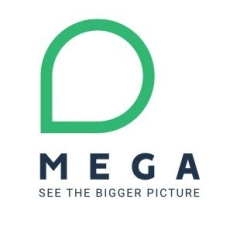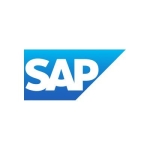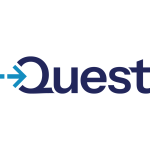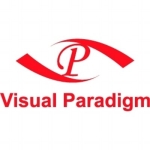What is most valuable?
The most valuable feature of the tool is its ability to provide line of sight from Buinsess Outcome (Service to be delivered) down to how the resources are configured and connected to make it happen. Understanding how the Business and technology align to provide the organizational ability to deliver the niche that it plays in in our environment.
It does this by allowing us to capture the business process, business elements, and the technology elements and create relationships between them.
The ability to create diagrams and documents that tell the right story is a key feature. With this product we are able to produce reports that take architecturally modeled information and produce System Design Guides that are foundational for our organization to certify and accredit our Investments. The ability of the report to "walk the architecture" and pull out relevant ports, protocol, and Service information related to which client applications are talking to which servers helps validate what firewall ports need to be opened, etc.
How has it helped my organization?
It started improving visibility and provided us a better picture of technology dependencies. It has allowed us to better document what the business needs and more cleanly identify the technologies that are going to be needed to support the business needs. It has allowed us to have a cleaner picture of how technology is expected to help the business and reduce redundant technology provided functionality accross the organization.
What needs improvement?
Stability is definitely a critical thing.
Organizations can not afford to have to be rebooting production systems to add a user or to reset a users session. It needs to be more self-healing.
The intuitiveness of the interface.
The ability for the tool to guide a user through a process to ensure architectural changes are made based on knowledge of modeling and business rules, especially where they are complex is very critical to ensuring an manageable architecture. This is especially true when an organization does not have individuals with a deep knowledge of the tool.
For how long have I used the solution?
We have used this product both pre-web version and the beta versions of Hopex.
What do I think about the stability of the solution?
Stability has gotten much better.
We have used Hopex since it was beta. V1R1 was very unstable, it required multiple reboots a day. These were reboots of the applications and did not normally require a server reboot. With V1R2 Hopex became much more stable. V1R3 for the most part has been stable platform.
Because of our architectureal needs we tend to be more on the bleeding edge of their product than a lot of others are willing to be. This means we have identified more issues with Hopex than some of the other customers. The Department of Defense (DOD) in general, tends to have tighter security and configuration requirements. This means that we have pushed Mega to have to readdress some security design issues that other customers may not have found to be a concern.
In many cases Mega has been fairly responsive to addresses product defects. Not all of them have happened in what I would consider a timely manner. Unfortunately, some things that were identified were not be released until two or three versions down. If there is a functional issue that really is a pain point, a broken feature, and you hear that it is not going to get it fixed for four months, this really creates a business issue. They have sped it up in some cases. Some of the issues are due to the time difference as the corporate offices are in france which means they historically have not always got the responses back in as timely a manner as I think should be applicable.
In the current version, we still have to clean up processes on a weekly basis. Comparatively speaking, from version 1 release 1 to version 1 release 3 it's much more stable product, but overall, it's still not where I would expect it to be as far as stability.
What do I think about the scalability of the solution?
It is hard for us to provide a reflective answer to scalability as we have on average, 3 or 4 editors working in the system making changes at any given time and only 20ish people accessing Hopex in a read-only role. That's not really what I would consider a scalability test.
.
How are customer service and technical support?
We contact technical support pretty routinely. The technical support guys in the United States are very responsive. They are knowledgeable. They do a great job of capturing the information and they coordinate with the corporate resources that they need to to try to address the issues. Where they can provide resolution quickly, they have done so. Where not, they have said, "Okay, we have passed it on to the right individuals. They are looking at it." At that point, there's not much more that the local tech support can do.
Which solution did I use previously and why did I switch?
When we started the process back in 2011, I did a contract and had a support team and they went through the Gartner Quadrant. They identified Mega, Troux System Architect and two others, I can't remember the other names of them. We basically identified what we wanted to accomplish with the tool and identified a set of metrics that we can sit down and ask them questions to walk them to scenarios. Then did an evaluation and then did a selection.
What other advice do I have?
Overall I would say that this platform, addresses the needs better than other solutions we have looked at, it requires less support. We only have myself and one other administrator that support it.
We have a very in-depth knowledge of the behind-the-scenes workings of the solution. I do know from personal experience that other solutions have more significant footprint of resources that would have to support it. From database people to administrators, etc.
Overall rating: 7-8 (out of 10). Stability is one shortfall and it's probably the major one. I would probably take somewhere between a point and a point and a half off for that. The other one is just the interface. The fact that we have to do some things through the full client on the server as opposed to being able to do everything from a web interface management platform is in the reach of another half a point to a point.
Know what you are trying to accomplish with it, to know what you need, and whether it can truly provide what you need. The best outcome that you can get is that you have that view into how everything is tied together. In other words, what should be out there in the architecture or what should be out there in the environment and what should be providing to support to support the business.
Disclosure: PeerSpot contacted the reviewer to collect the review and to validate authenticity. The reviewer was referred by the vendor, but the review is not subject to editing or approval by the vendor.


















